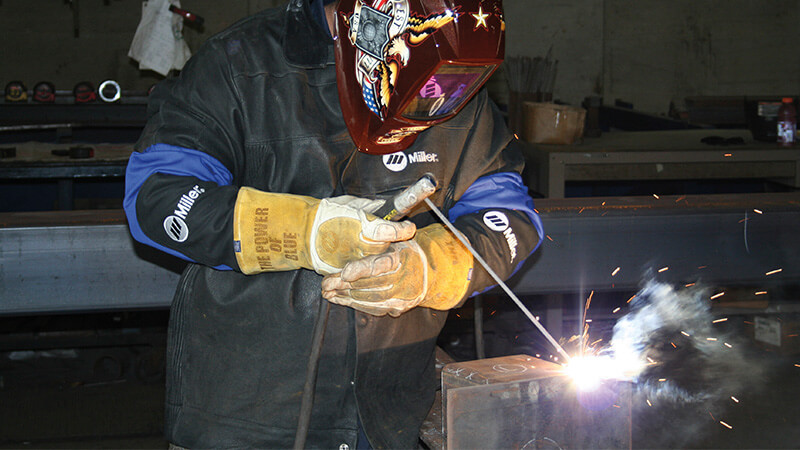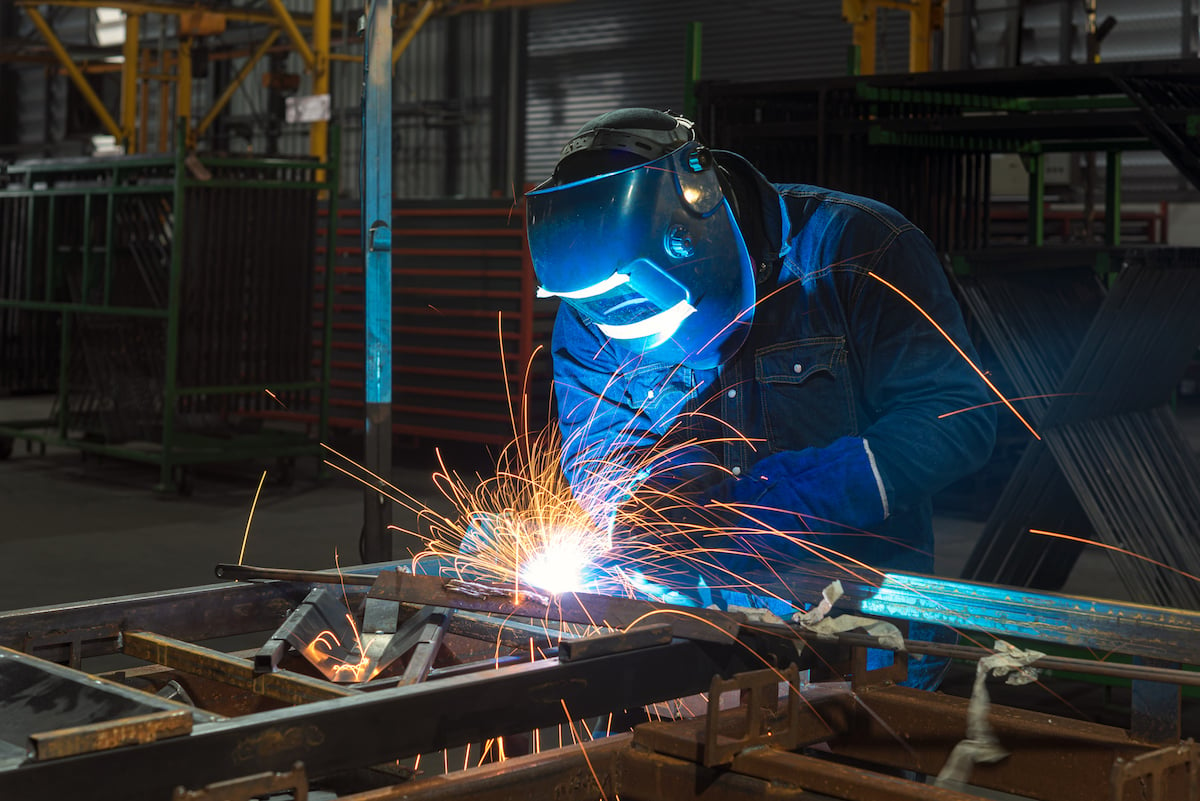Typical Welding Repair Issues and How to Address Them Successfully
Welding repair services often run into a variety of concerns that can endanger the honesty of the end product. Typical issues consist of insufficient infiltration, porosity, and imbalance, to name a few. Each flaw offers one-of-a-kind challenges that need certain approaches for resolution. Recognizing these issues is essential for welders intending to improve their skills and results. This discussion will explore these usual welding fixing concerns and efficient techniques to address them.
Poor Infiltration
Inadequate penetration happens when the weld metal stops working to completely fuse with the base material, causing weak joints and possible structural failures. This problem often comes from insufficient warmth input, inaccurate electrode angle, or incorrect welding speed. Welders may come across insufficient penetration because of a mistake of the essential criteria for a particular material density or type. In addition, contamination on the base product's surface can impede reliable bonding, intensifying the issue. To address insufficient infiltration, welders must ensure proper setups on their equipment and preserve a tidy work surface. Regular inspection of welds is suggested to determine any shortages early, permitting timely adjustments and the prevention of compromised architectural stability in bonded assemblies.
Porosity
Porosity is a typical defect in bonded joints that manifests as little gas bubbles caught within the weld metal. This defect can endanger the honesty of the weld, leading to decreased toughness and possible failing under stress. Montana Mobile Welding and Repair. Porosity normally emerges from contamination, moisture, or incorrect welding methods, which enable gases to run away into the molten weld swimming pool. To deal with porosity, welders need to guarantee appropriate surface preparation, preserve a tidy functioning environment, and make use of suitable welding specifications. Additionally, picking the best filler product and protecting gas can minimize gas entrapment. Normal assessment and testing of welds can aid identify porosity early, assuring timely restorative activities are taken, therefore preserving the top quality and dependability of the welded structure
Imbalance
Misalignment in welding can emerge from numerous aspects, consisting of improper setup and thermal development. Recognizing the origin is vital for efficient resolution. Several adjustment methods are readily available to straighten components and ensure structural integrity.
Causes of Imbalance
Welding imbalance often stems from a selection of underlying concerns that can endanger structural integrity. One main cause is inappropriate fit-up of elements prior to welding, which can lead to gaps and irregular surface areas. Variations in thermal development during the welding procedure can also lead to distortion, specifically if the products being signed up with have different coefficients of expansion. In addition, insufficient securing and fixturing may fall short to hold components securely in position, leading to activity during welding. Badly conserved equipment, consisting of welding makers and tools, may introduce incongruities in the weld bead, more adding to imbalance. Operator error, stemming from inadequate training or experience, can additionally play a considerable duty in developing misaligned welds.

Modification Methods Available
Attending to misalignment effectively calls for a combination of corrective methods customized to the details concerns at hand. One typical technique is the usage of jigs or components to hold parts in the correct placement during welding, making certain regular positioning. In addition, preheating the materials can help decrease distortion and enhance fit-up. For considerable misalignment, mechanical adjustment techniques, such as using hydraulic jacks or clamps, can be used to correct the setting before welding. Post-weld warmth therapy may likewise be required to eliminate tensions triggered by misalignment. Lastly, careful evaluation and change throughout the configuration phase can stop misalignment issues from ending up being considerable problems, advertising a smoother welding procedure and boosting total architectural integrity.
Distortion
Distortion is a typical difficulty in welding that can emerge from various factors, including unequal heating & cooling. Recognizing the sources of distortion is vital for implementing effective prevention methods. Addressing this problem not just enhances structural honesty but likewise improves the total quality of the weld.
Root causes of Distortion
When based on the intense warm of welding, products typically undergo modifications that can result in distortion. This sensation mainly arises from thermal growth and tightening throughout the welding procedure. As the weld location warms up, the product expands; upon cooling, it gets, which can produce internal tensions. Furthermore, unequal heating throughout a workpiece can intensify these tensions, leading to warping or this contact form flexing. The kind of material additionally plays a significant duty; metals with varying thermal conductivity and coefficients of development may react in different ways, causing unforeseeable distortions. Poor joint style and inadequate fixturing can contribute to misalignment throughout welding, increasing the possibility of distortion. Recognizing these causes is necessary for efficient welding repair and avoidance strategies.
Avoidance Techniques
Reliable prevention strategies for distortion during welding focus on regulating warm input and ensuring appropriate joint style. Keeping a consistent warm input aids to reduce thermal development and contraction, which can lead to distortion. Utilizing strategies such as pre-heating the work surface can additionally lower the temperature gradient, advertising uniform heating. Additionally, choosing appropriate joint designs, such as T-joints or lap joints, can enhance security and reduce stress concentrations. Executing proper fixturing to protect the work surfaces in position further help in preserving placement throughout the welding process. Lastly, staggered welding sequences can distribute warmth extra equally, stopping local distortion. By applying these techniques, welders can significantly reduce the possibility of distortion and enhance the total high quality of their welds.
Fracturing
Splitting is a common concern run into in welding repair work, often arising from various aspects such as inappropriate air conditioning rates, material choice, or poor joint prep work. The incident of splits can substantially compromise the stability of the weld, resulting in possible failures throughout procedure. To resolve this concern, welders have to initially examine the origin, guaranteeing that materials are compatible and properly selected for the specific application. Additionally, regulating the air conditioning rate throughout the welding process is necessary; rapid air conditioning can induce stress and bring about splitting. Appropriate joint design and preparation also add to decreasing the threat. Carrying out these strategies can improve weld top quality and longevity, ultimately lowering the probability of cracking in completed weldments.

Insufficient Combination
A substantial concern in welding repair services is insufficient fusion, which takes place when the weld metal does not adequately bond with the base product or previous weld passes - Belgrade Welding. This defect can cause weak points in the joint, potentially jeopardizing the honesty of the welded framework. Aspects adding to incomplete fusion include insufficient warmth input, inappropriate welding method, and contamination of the surfaces being joined. To address this issue effectively, welders ought to ensure appropriate pre-weld cleansing and surface area preparation, as well as change their welding parameters to achieve ample infiltration and fusion. Normal inspection during the welding have a peek at this site process can also assist recognize incomplete blend early, enabling for prompt restorative measures to improve the general high quality of the weld
Overheating
While welding fixings can enhance architectural stability, overheating offers a significant obstacle that can result in product degradation. Excessive heat during welding can alter the mechanical residential properties of metals, leading to minimized stamina, raised brittleness, and bending. This phenomenon is particularly important in high-stress applications where architectural reliability is vital. Recognizing overheating can involve visual evaluations for staining or distortion, in addition to monitoring temperature throughout the welding process. To alleviate the threats related to getting too hot, welders need to utilize appropriate techniques, such as regulating warm input, changing traveling rate, and utilizing suitable filler materials. Additionally, applying pre- and post-weld heat treatments can aid recover material residential properties and improve the overall high quality of the repair, guaranteeing long-term performance and safety.
Frequently Asked Inquiries
What Are the Usual Signs of a Welding Problem?

Exactly How Can I Check My Welds for High quality?
To test welds for quality, one can use aesthetic inspections, ultrasonic testing, and radiographic techniques. Each technique assures structural stability, recognizes issues, and confirms adherence to defined requirements, ultimately boosting the dependability of the welded joints.
What Security Preventative Measures Should I Take While Welding?
When welding, one ought to prioritize safety and security by putting on appropriate individual protective equipment, guaranteeing appropriate air flow, securing flammable products away, keeping a clean workspace, and being aware of environments to protect against crashes and injuries.
Can I Fix a Weld Without Renovating the Entire Joint?
Fixing a weld without redoing the whole joint is possible, depending upon the damage (Belgrade Welding). Strategies such as grinding, including filler material, or using a welding procedure can efficiently deal with particular flaws while preserving the surrounding structure
What Devices Are Crucial for Effective Welding Repair Works?
Necessary devices for efficient welding fixings include a welding equipment, cable brush, grinder, safety gear, clamps, and filler materials. Each tool plays a crucial role in making certain top quality and security during the repair procedure. Porosity typically develops from contamination, wetness, or improper welding methods, which allow gases to get away into the molten weld swimming pool. Inadequately maintained devices, including welding machines and devices, may present disparities in the weld bead, additional adding to imbalance. When subjected to the extreme heat of welding, products frequently undertake changes that can lead to distortion. Fracturing is a common issue run into in welding repair work, frequently resulting from different variables such as incorrect air conditioning rates, material option, or insufficient joint preparation. A substantial problem in amico welder welding repairs is incomplete fusion, which happens when the weld metal does not effectively bond with the base material or previous weld passes.